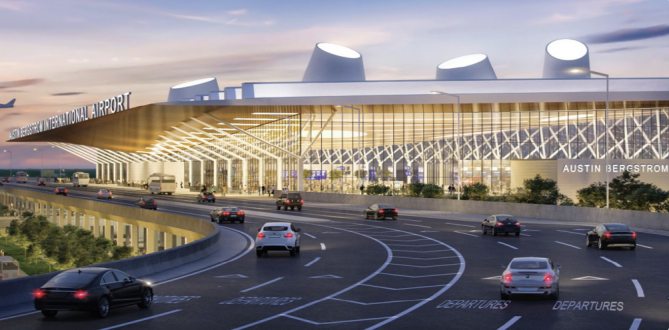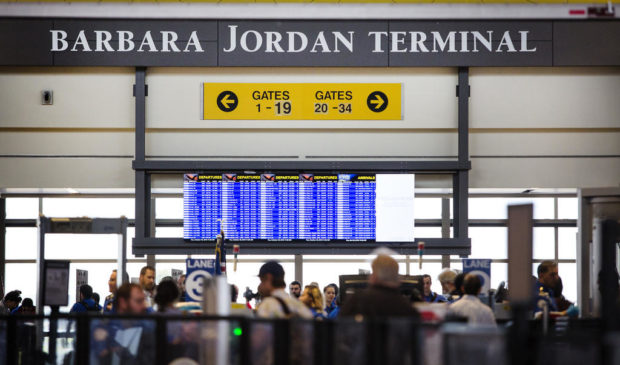Austin-Bergstrom International Airport plans expansion as air traffic soars
Wednesday, October 31, 2018 by
Audrey McGlinchy, KUT Take all the people who live in New York City. Multiply that by two, and you’ll get the number of passengers who are expected to travel through Austin’s airport this year: 16 million.
That’s a lot.
By 2040, Austin-Bergstrom International Airport staff estimate, that number will nearly double, and ABIA will begin processing more than 31.4 million passengers annually.
Luckily, the city is planning for them.
Austin City Council members are scheduled to vote Thursday on sending the airport’s 20-year master plan to the Federal Aviation Administration for review.

An artist’s rendering of the new north terminal at Austin-Bergstrom International Airport.
Credit: Austin-Bergstrom International Airport
Here are some highlights from that plan:
- A new north terminal for drop-off, ticketing and baggage claim
- A new concourse built at the rear of the airport, which would add 32 new gates
- A pedestrian bridge connecting the current terminal to the new concourse
- An open-air plaza with playgrounds, seating, and food and drink
- 1,000 additional parking spaces
ABIA staff estimate the new north terminal and pedestrian bridge will be built by 2025.

The master plan includes an open-air plaza with playgrounds, seating and food.
CREDIT AUSTIN-BERGSTROM INTERNATIONAL AIRPORT
“We need those gates desperately in order to accommodate the demand from the airlines to put more service into our market,” ABIA Executive Director Jim Smith told Council members Tuesday. “In addition, we need more ticket, baggage space, security space to process that many more passengers.”
The construction would be paid for with airport revenue and federal grants, so it wouldn’t rely on City Council approval. An ABIA spokesperson said there is no total cost estimate yet, but city staff estimate the first 10 years of construction will cost roughly $4 billion.
Photo by Julia Reihs / KUT. This story was produced as part of the Austin Monitor’s reporting partnership with KUT.
The Austin Monitor’s work is made possible by donations from the community. Though our reporting covers donors from time to time, we are careful to keep business and editorial efforts separate while maintaining transparency. A complete list of donors is available here, and our code of ethics is explained here.
You're a community leader
And we’re honored you look to us for serious, in-depth news. You know a strong community needs local and dedicated watchdog reporting. We’re here for you and that won’t change. Now will you take the powerful next step and support our nonprofit news organization?










